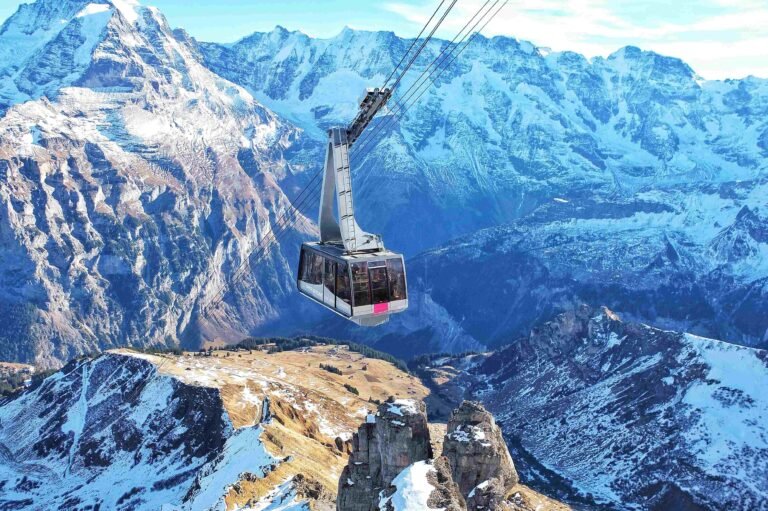Explore Australia’s hidden gems with this comprehensive guide to unique and lesser-known destinations. Discover pristine beaches, untouched rainforests, and incredible wildlife adventures.
Australia is well-known for its famous landmarks such as the Sydney Opera House, Uluru, and the Great Barrier Reef, but it also boasts a lot of hidden gems that provide incredible experiences far from the typical visitor count. These less well-known locations provide a more personal and authentic look at Australia’s many environments, wildlife, and cultures. These Australian hidden gems are a fantastic place to start if you wish to stray off the path.
1. A Wildlife Paradise on Kangaroo Island, South Australia

Off the coast of South Australia, Kangaroo Island is a natural habitat noted for its varied ecosystems, unspoiled beaches, and jagged cliffs. Though the name suggests otherwise, kangaroos are only one among numerous species that thrive here. Along with a range of birds, koalas, sea lions, and penguins can also be seen.
What to do on Kangaroo Island:
- Walk amid an Australian sea lion colony in Seal Bay Conservation Park to get a singular experience on this island.
- Among the most beautiful coastal landscapes on the island, Flinders Chase National Park includes the sculpted Remarkable Rocks and the Admirals Arch, which provide amazing ocean vistas.
- Often ranked as Australia’s best beach, Vivonne Bay is perfect for a leisure swim or beach picnic.
Ideal time for travel:
Although Kangaroo Island is gorgeous all year long, wildlife watching is greatest in the spring (September to November), when most species are active. Though cooler, winter (June–August) is perfect for peaceful, scenic trekking. You can easily book flights to Adelaide and then take a ferry to reach the island.
2. Walk Through Ancient Wilderness: Cradle Mountain, Tasmania

Part of the UNESCO-designated Tasmanian Wilderness World Heritage Area, Cradle Mountain is in the heart of Tasmania’s wilderness. Stunning alpine views, glistening clean lakes, and old rainforests abound on Cradle Mountain. Hikers and nature lovers will find this untouched region peaceful and beautiful.
What to do at Cradle Mountain:
- Dove Lake Circuit: A photographer’s fantasy is created by the easy-to-moderate stroll around the beautiful Dove Lake under the Cradle Mountain backdrop.
- The Overland Track, a multi-day (65 km) journey across some of Tasmania’s most breathtaking landscapes featuring ancient forests, alpine meadows, and deep gorges, is perfect for seasoned hikers.
- See wombats, Tasmanian devils, and pademelons in their native habitat.
Ideal time for travel:
Although Cradle Mountain is accessible year-round, the better hiking conditions come during the warmer months, December through March. The greatest season to get a complete Alpine experience and witness snow-covered scenery is winter, June through August.
3. Ningaloo Reef, Western Australia: Snorkel Away from Crowds

Although Australia’s Ningaloo Reef offers a similarly remarkable marine experience with fewer visitors, the Great Barrier Reef is globally well-known. One of the biggest fringing reefs in the world, this UNESCO World Heritage site is situated off Western Australia’s remote coast.
What makes Ningaloo Reef unique?
- Ningaloo is one of the few places worldwide where one may swim with the gentle whale shark, the biggest fish in the ocean. March to July is the season.
- Unlike many other reefs, Ningaloo’s coral gardens are conveniently reachable from the shore, which makes them perfect for novices or those pressed for time.
- Sunbathing and snorkeling are well-suited for Turquoise Bay’s beautiful, calm waters.
Ideal time for travel:
Although the reef may be enjoyed all year with warm waters and varied marine life, the best time to visit for whale sharks is between March and July.
4. Port Stephens, New South Wales: Leisure and Adventure

Just a short drive from Sydney, Port Stephens is a coastal paradise with golden beaches, rolling sand dunes, and a range of outdoor pursuits. Though close to the city, it is nevertheless a secret gem mainly unaltered by regular tourists.
Activities in Port Stephens:
- Perfect for sandboarding, 4WD excursions, and camel rides are the biggest rolling sand dunes found in the Southern Hemisphere.
- Port Stephens is renowned for its resident bottlenose dolphins. Go kayaking or on a dolphin-watching trip for a closer experience.
- The Tomaree Head Summit Walk provides breathtakingly expansive views of the coast.
After an exciting day sandboarding on the dunes, unwind in one of the many Port Stephens hotels offering stunning ocean views.
Ideal time for travel:
Less visitors and warmer temperatures characterize spring (September–November) and fall (March–May). See humpback whales traveling the area between May and November.
5. An Exclusive Island Escape: Lord Howe Island, New South Wales

A small UNESCO World Heritage-listed gem, Lord Howe Island is 600 km off the coast of New South Wales. The island offers a secluded and unspoiled environment perfect for those looking for peace and tranquility because visitor counts are limited to just 400 at a time.
Activities on Lord Howe Island:
- One of Australia’s best day hikes, the Mount Gower hike winds up the highest point on the island, offering amazing vistas.
- Lagoon Beach is a great place for snorkeling because of its calm, glistening clean waters which house tropical fish, turtles, and vibrant coral.
- One of the rarest birds in the world, the Lord Howe Island woodhen, calls the island home.
Ideal time for travel:
Visit in spring (September to November) or fall (March to May) for the finest weather. The limited number of guests calls for careful planning of lodging and flights well in advance.
6. The Oldest Rainforest in the World: The Daintree Rainforest, Queensland

Among the world’s oldest rainforests, the Daintree Rainforest is located in Far North Queensland. Rich in species, this lush, tropical beauty offers a once-in-a-lifetime experience for wildlife buffs as well as environmentally conscious visitors.
What to do in the Daintree:
- See saltwater crocodiles, rare birds, and other wildlife by boating the Daintree River Cruise.
- Famous swimming area Mossman Gorge boasts immaculate water surrounded by tall rainforest trees. Another way to learn about the cultural relevance of the region is on a guided walk with an Aboriginal guide.
- Night Wildlife Tours: The Daintree comes alive at night with nocturnal species. Come along for a guided stroll to see glow worms, frogs, and tree kangaroos in action.
Ideal time for travel:
The perfect weather is between May and September, when humidity is low, and temperatures are cooler. Steer clear of the rainy season, December through March, when floods might complicate travel.
7. The New South Wales Sapphire Coast: A Laid-back Coastal Retreat

Australia’s Sapphire Coast is a stunning piece of coastline distinguished by immaculate beaches, national parks, and plenty of aquatic life. Southern New South Wales-based, it has a slower pace of life and fewer visitors than its northern counterparts.
Highlights of the Sapphire Coast:
- The rugged coastal park with amazing rock formations, picturesque hiking paths, and lots of species is Ben Boyd National Park.
- Eden: Renowned for its rich whaling legacy, Eden is also among Australia’s top whale viewing sites, especially from May through November during migration season.
- Perfect for beachgoers and seafood aficionados, Merimbula is a charming seaside town with a laid-back feel.
Ideal time for travel:
See whales between September and November; alternatively, enjoy beach activities and water sports in the summer (December to February).
8. South Australian Hidden Outback Treasure: Wilpena Pound

Found in the Flinders Ranges, Wilpena Pound is a naturally occurring amphitheater created by past geological events. This amazing outback hideaway offers unusual Aboriginal cultural activities together with gorgeous surroundings.
What to do in Wilpena Pound:
- For magnificent views of the challenging terrain, climb to St Mary Peak, the highest point in the Flinders Ranges.
- Join guided trips to discover Dreamtime stories, ancient rock art, and the Adnyamathanha people, the traditional protectors of the area.
Ideal time for travel:
The best seasons to visit are spring (September to November) and fall (March to May), as the temperatures are more suitable for outdoor activities including trekking.
Conclusion
From nature lovers and adventurers to those seeking a laid-back vacation, Australia’s hidden treasures appeal to all kinds of visitors. Investigating these lesser-known locations lets you see Australia’s real beauty free from the usual crowd. Thus, consider deviating from the typical path to see these unusual and intriguing sites the next time you arrange an Australian trip.
FAQs
1. When should one visit Ningaloo Reef?
From March to July is the best time to visit Ningaloo Reef, as you might swim with whale sharks there. All year long, snorkeling and diving may be done on the reef.
2. Could you swim in the Daintree River?
Saltwater crocodiles make swimming in the Daintree River hazardous. Still, there are other safe swimming venues close by, like Mossman Gorge.
3. How may I reach Kangaroo Island?
From Cape Jervis, a 90-minute drive from Adelaide, Kangaroo Island is reachable by ferry; from Adelaide, by a short flight.




